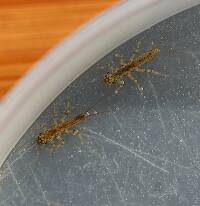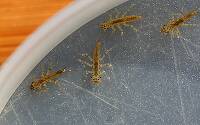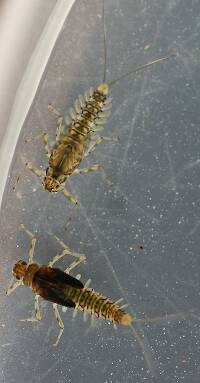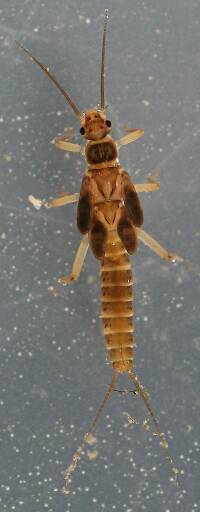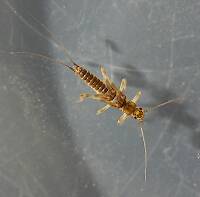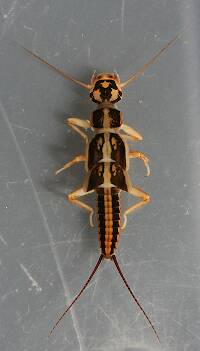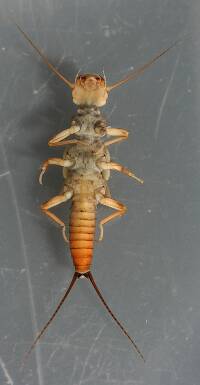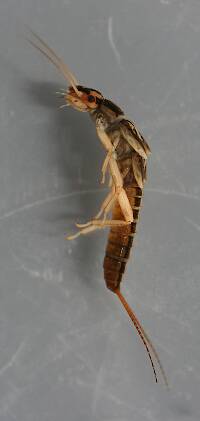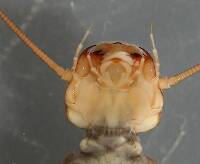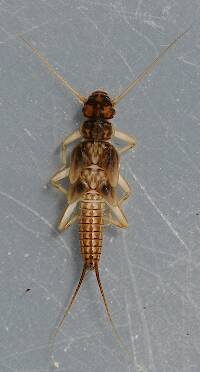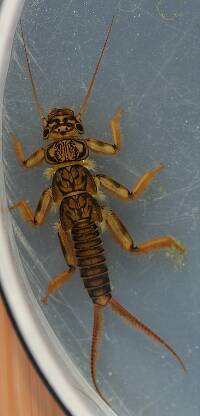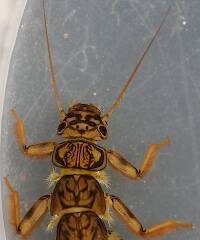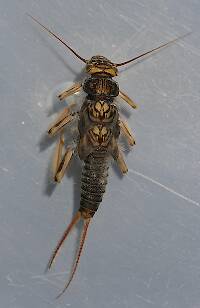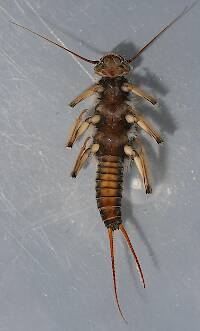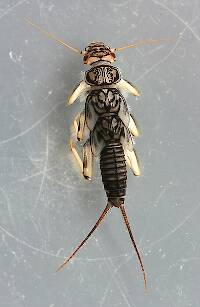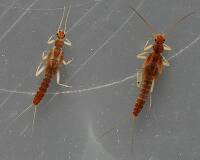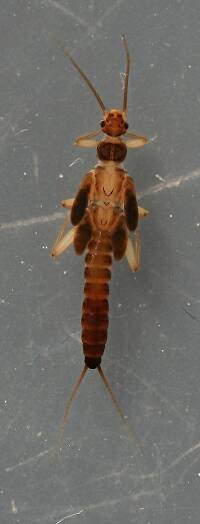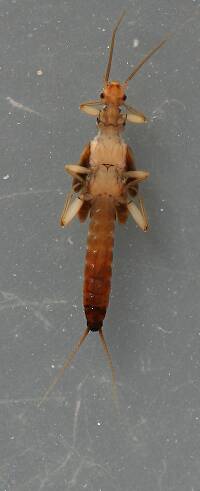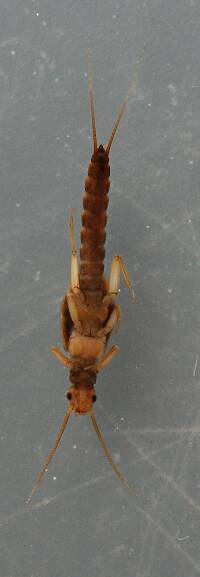
Hex Mayflies
Hexagenia limbata
The famous nocturnal Hex hatch of the Midwest (and a few other lucky locations) stirs to the surface mythically large brown trout that only touch streamers for the rest of the year.
Featured on the forum

Troutnut is a project started in 2003 by salmonid ecologist Jason "Troutnut" Neuswanger to help anglers and
fly tyers unabashedly embrace the entomological side of the sport. Learn more about Troutnut or
support the project for an enhanced experience here.
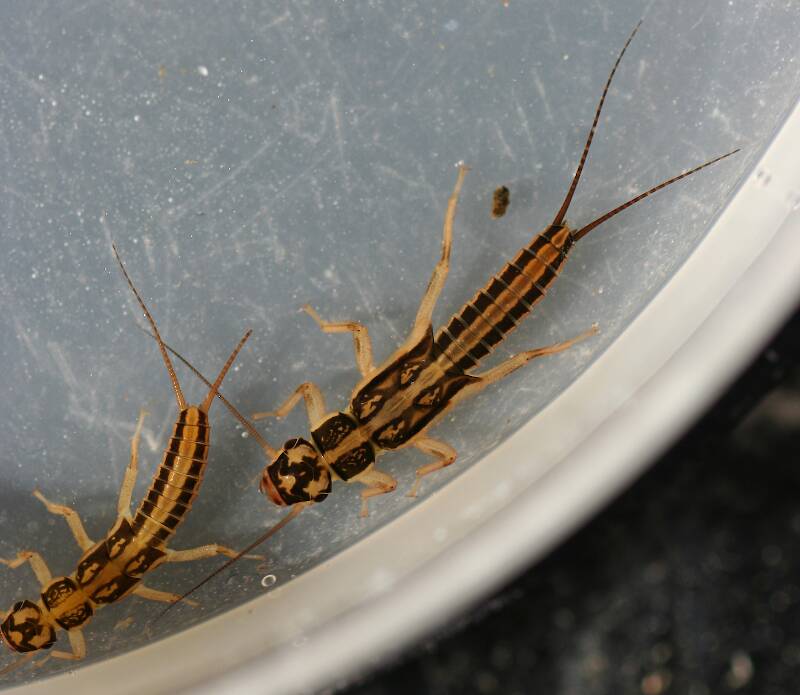
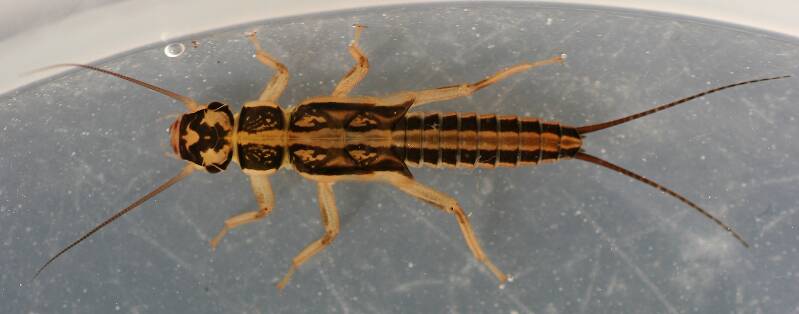
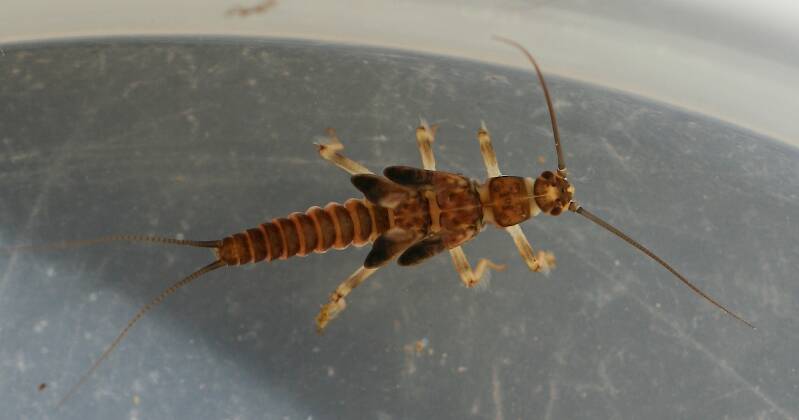
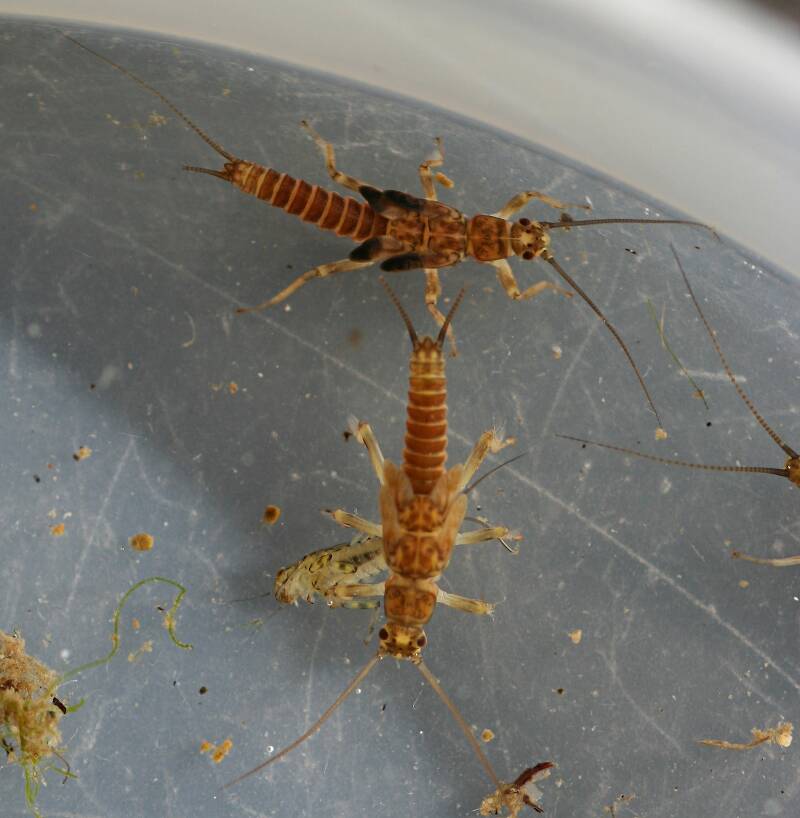
Millcreek on Feb 21, 2018February 21st, 2018, 6:50 am EST
I've had the Isoperla species in here before but it was dead when photographed and these are live. Species were identified to genus using "An Introduction to the Aquatic Insects of North America" by Merritt, Cummins and Berg (2008). They were identified to species using "The Isoperla of California (Plecoptera: Perlodidae) Larval Descriptions and a Key to 17 Western Nearctic Species" by J.B. Sandberg.(2011).
http://www2.pms-lj.si/illiesia/papers/Illiesia07-22.pdf
And "New Descriptions of North American Taenionema Larvae (Plecoptera; Taeniopterygidae)" by K.W. Stewart (2009).http://www.zobodat.at/pdf/Illiesia_05_0128-0145.pdf
The nymphs were collected 2/20/18 in shallow, fast water with small to medium gravel. The Isoperla marmorata was 13-15 mm and the Taenionema pacificum was 9-12 mm.
http://www2.pms-lj.si/illiesia/papers/Illiesia07-22.pdf
And "New Descriptions of North American Taenionema Larvae (Plecoptera; Taeniopterygidae)" by K.W. Stewart (2009).http://www.zobodat.at/pdf/Illiesia_05_0128-0145.pdf
The nymphs were collected 2/20/18 in shallow, fast water with small to medium gravel. The Isoperla marmorata was 13-15 mm and the Taenionema pacificum was 9-12 mm.
"If we knew what it was we were doing, it would not be called research, would it?"
-Albert Einstein
-Albert Einstein
Quick Reply
Related Discussions
Topic
Replies
Last Reply
1
Jan 29, 2016
by Martinlf
by Martinlf



